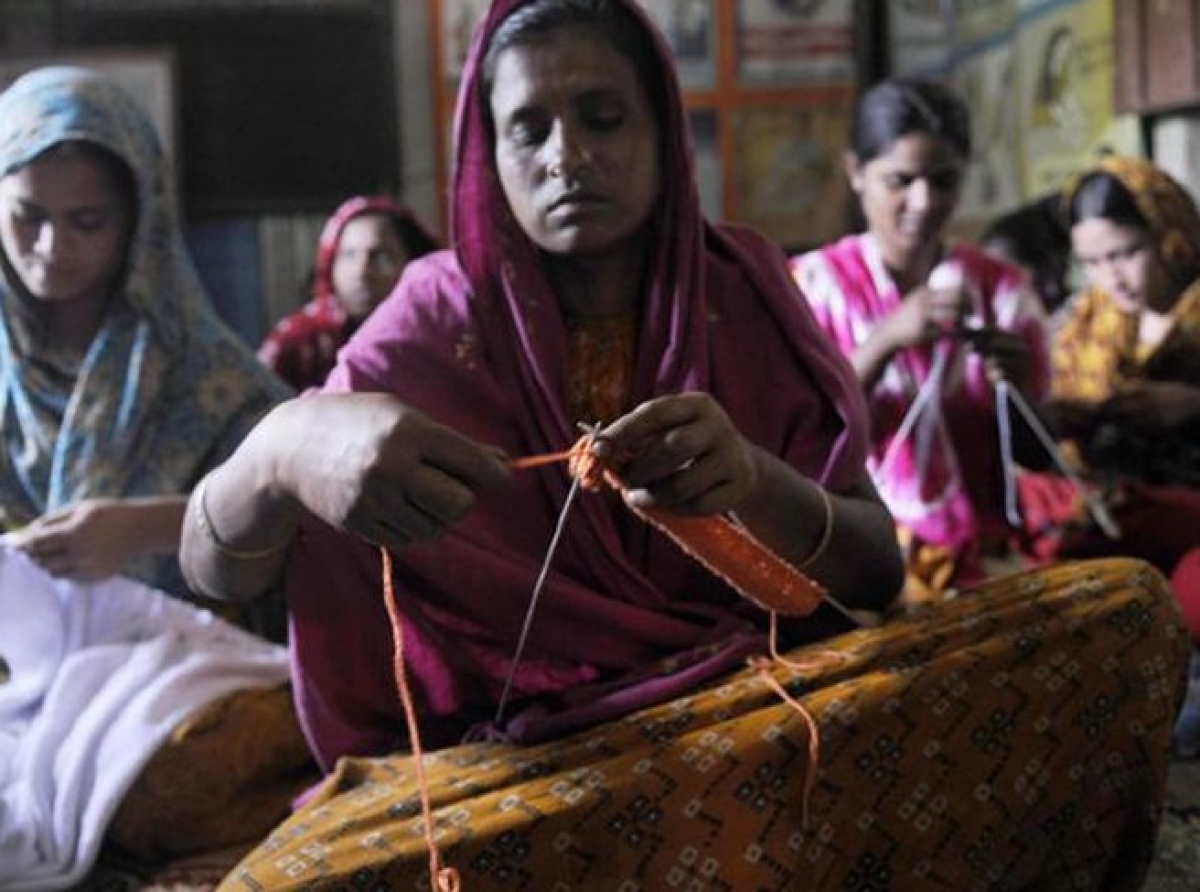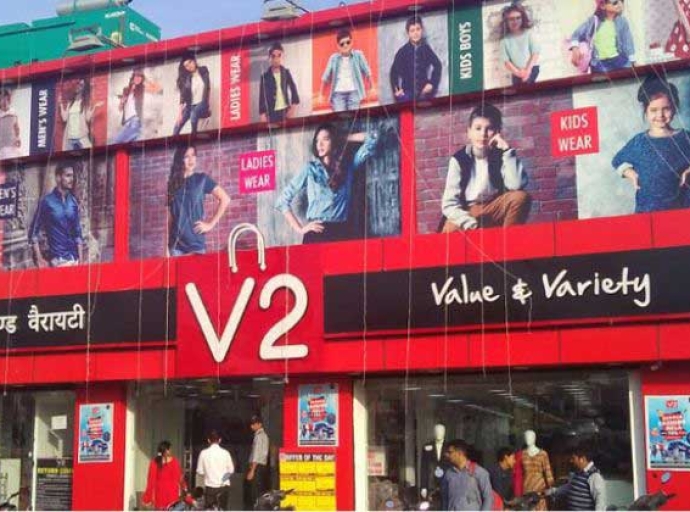15 April 2023, Mumbai
It is no secret that a global phenomenon called 'Fast Fashion', driven by the basic psyche of consumers demanding affordable clothing/fashion, unfortunately conspicuously has a darker side that quite often goes unnoticed. Uncovering what one describes behind the pump & show & glitz of trendy/catchy clothing, lies a brutal reality on the ground of rampant exploitation, sweatshops, human rights, child labor abuses, and so forth.
Fast fashion is all about Exploitation, pollution, inequality, and waste.
Fashion's Dark Underbelly
This article harps vividly into the sensitive facet of the human cost of fast fashion, putting to spotlight the unfriendly, unreasonable working conditions such as low wages/below minimum applicable wages, environmental pollution/toxic gases, and social injustice/Social inequality/social discrimination that plague the apparel/garment industry, and the need for greater consciousness and change in this untenable/unsustainable system.
Dialing India
The Indian apparel industry, predominantly which is one of the key players in the uprising global fast fashion market, is by no means immune to the human cost of this industry. As the industry estimates that in excess of 12 million workers are employed, many face dire working conditions, spanning long hours, low wages, lack of job security, and limited social protection made available.
Another interesting report published by Cividep India, a labor rights organization sheds light outlining that in excess of say 90% of workers in the Indian apparel/garment industry are employed informally, making them unguarded to exploitation and abuse.
It is also imperative in this article to highlight an interesting fact, the majority of workers are women who face gender discrimination/bias and harassment in the workplace.
It will be quite interesting here to make mention a study by the India Committee of the Netherlands found that child labor is observed/prevalent in the Indian apparel industry, with innocent children as young as 10 years old found working in untenable/hazardous conditions.
Again, the use of hazardous/toxic chemicals in textile manufacturing also is associated with health risks to the workforce, with exposure to toxic/hazardous chemicals causing serious respiratory issues, skin varied diseases, and potentially many other known/unknown health problems.
Furthermore, the fast fashion industry contributes to relentless environmental pollution in India, with textile dyeing and processing causing rampant ill effects such as heavy water pollution and soil contamination. No-brainer that this only has severe implications for the health and livelihoods of the local communities, including farmers and fishermen who unfortunately heavily depend on clean water and land.
To wrap up; Despite efforts by some brands, organizations, and relevant trade bodies/associations to ameliorate working conditions and promote definitive sustainability in the Indian apparel industry, the fact of life is whether one likes or not that score of workers still confront blatant exploitation and abuse due to the never-ending pursuit of cheap and disposable fashion not really surprising many.
Exploitation, Sweatshops, and Modern Slavery; the human cost of fast fashion in the Indian apparel industry is pretty evident, with workers facing in some of the reported cases exploitation, fraught with obvious working conditions safety issues, and intolerable environmental pollution.
What is needed of the day is timely measures are a must/needed to protect the working rights and more importantly well-being of these workforces, promote sustainability and harness a more conscious, ethical, and responsible fashion industry going forward.
Fashion's Dark Secret
Gujarat, an Indian state in the west, contains the rapidly expanding metropolis of Ahmedabad. The suburbs of the city have been rapidly expanding as a centre for the production of clothing for several international multinational companies. For the garment employees at the Nandan Denim plant, the day of February 8th, 2020, began just like any other day.
Nobody could have foreseen the harrowing events that would take place that evening. In the evening, a sizable fire broke out in the factory's shirting division and quickly spread across the two-story building. At the time, there were more than 60 people on the floor, yet there was only one access and exit door. The sole door required scaling a high staircase, making escape extremely challenging.
The plant, which was full of extremely flammable denim, fabric, and textile dust, was swiftly consumed by fire.
The Human Toll of Fast Fashion; Cries for aid from the workers trying to escape could be heard as smoke poured through the windows. The fire was extinguished after approximately 22 hours, but the disaster claimed the lives of seven workers, whose ages ranged from 22 to 47.
The Hidden Consequences of Fast Fashion
The evacuated remains, which were completely burned beyond recognition, had to be identified after a week of waiting for the grieving relatives of the victims. We can't even grieve our deceased since we don't know which one is ours, a distraught guy who lost his nephew in the fire remarked.
Following the incident, a police investigation found that the plant had broken many safety laws. A quick visual investigation revealed that there was no ventilation, and there were no safety precautions like fire escapes or even the most basic emergency equipment. The sole entry and escape door was up a ladder, which further sealed the employees' doom.
Fashion's True Cost
Nandan Denim claims to be the largest and fourth-largest denim fabric manufacturer in the world, producing denim, shirting, and yarn for some of the most well-known brands in the world. Its manufacturing employees, who are mostly women, make roughly 35 cents an hour while sometimes putting in 14 hours a day in hazardous conditions.
Survivors told reporters that they must sew more than 400 clothing pieces each day against their will, sometimes skipping meals and bathroom breaks. They work over 14 hours a day, according to one employee.
Do they, however, have a choice? In one plant or another, there are fires sometimes. Nobody is concerned, so they continue to work. Employees kept working even after the fire had begun since there was insufficient of an alarm system to begin the evacuation procedure.
The Human Side of Fast Fashion
The failure of the mandated audits to find such widespread violations of the minimal safety standards may be linked to a corrupt system that preys on the most marginalized and impoverished segment of our society. The laborers are frequently migrant workers who are employed under small contractors.
For the majority of them, this is their only chance at life. Therefore, they must live and work in conditions that are beyond deplorable.
The Real Victims of Fast Fashion; Seldom do they have a voice or an identity, and when they do, they are disregarded immediately. Poor working conditions are prevalent in the textile sector. Women are discriminated against, particularly in Bangladesh and India.
The High Price of Cheap Fashion
The compensation is poor, and there is sexual harassment of women. Although the minimum salary in Bangladesh increased in December from around 60 euros to 85 euros (per month), it is still insufficient to support a family, and women must work extra hours to make ends meet.
The issue of a lack of structure in the industry is another one we face. Women who attempt to form trade unions are typically intimidated by management and forced to quit the factory.
Fast Fashion Uncovered
Outside of Pakistan, women make up around 80% of the employment in the apparel sector. Since women are viewed as docile and may find it difficult to organize themselves, business prefers to employ them.
For instance, they might be unable to attend union meetings because they have so much to do when they get home.
Women in India and Bangladesh are accustomed to not being considered human beings since both countries have patriarchal solid societies. The fact that their supervisors yell at and treat them differently than males makes it simpler for them in the workplace.
Sustainability initiatives, ethical sourcing, and fair labor practices combat Fast Fashion.
Latest Publications


































